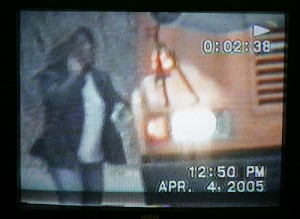On Friday, August 10, 2012, Connecticut Superior Court Judge Thomas Corradino awarded $52,666 in damages to Madeline Gleason, the former girlfriend of missing person and presumed murder victim Billy Smolinski. Gleason had sued Smolinski’s family members for severe emotional distress, claiming that they had posted missing person posters about Billy near Gleason’s home and the bus route that she drove. That the Judge agreed with her is nothing less than a travesty of justice.
One of the proven techniques for recovering missing runaway children and adults is to post flyers of those children in neighborhoods where they are thought to be hiding out, and at venues where they are known to hang out: places like malls and fast food outlets. The goals are many: to acquire credible leads; and to hopefully flush out the missing person and encourage them into returning home. An objective of this technique is to see if the flyers are removed from a particular location. If so, you may be closing in on the missing person or the person responsible for their disappearance.
When your child is missing, you want to get the word out. You talk about it, you post flyers and you beg for television time. If you can make enough people award of a missing child, you have a greater chance of affecting a recovery, whatever that means. In fact, that is the theory behind the Amber Alert program.
That is why missing person flyers are ubiquitous in our society. They are in storefronts in communities where children are missing, and they are a staple on cable television shows like Nancy Grace and Issues with Jane Velez Mitchell. Broadcast television features missing persons regularly on shows like Dateline, 48 Hours and 20/20. Missing person profiles, discussion groups and real crime forums have proliferated in social networking communities in recent years. Even Walmart features missing persons in all of their facilities through the United States. In fact, it is difficult to avoid missing persons in modern society, so for a judge to legitimize the convoluted claims of an ex-girlfriend, who was caught on camera tearing down those flyers, is unconscionable.
Of course, there is more to this story than missing person flyers. We know that Madeline Gleason was cheating on Billy Smolinski with another man, a married local politician, and that Billy disappeared shortly after finding this out. We know that a multi-jurisdictional law enforcement task force believes that Madeline Gleason’s son killed Billy Smolinski. Unfortunately, we also know that the Smolinski family continues to grieve and search for their beloved son.
I’ve known Jan Smolinski for many years. She is an honorable woman who is heartbroken that her son has been missing and presumed dead for nearly 8-years now. Like me, or the family of Sierra LaMar or any of the other parents of missing kids who stare teary eyed into the camera and say that, “We will never give up hope,” and defy stark realities, Jan Smolinski is a crime victim. The state should be protecting her, ensuring that she has the right to maintain her dignity and be treated with respect. Instead, because of the actions of Superior Court Judge Thomas Corradino, she and her family are being re-victimized by the power of an entire state. They have not only lost their son, but are in jeopardy of losing their life savings.
One of the fundamental functions of government is to protect the innocent and shield victims of crime. Instead Connecticut has chosen to pile indignity upon loss. This is heartbreaking and should not be allowed to happen. When a culture choses to devour the downtrodden, than that culture has lost its way.
 Posting missing person flyers is protected by the First Amendment of the United States Constitution. Or is it? What kind of message is being sent if one can become liable to legal action for simply posting a flyer of a missing person, regardless of whose neighborhood or bus route it is posted in?
Posting missing person flyers is protected by the First Amendment of the United States Constitution. Or is it? What kind of message is being sent if one can become liable to legal action for simply posting a flyer of a missing person, regardless of whose neighborhood or bus route it is posted in?








